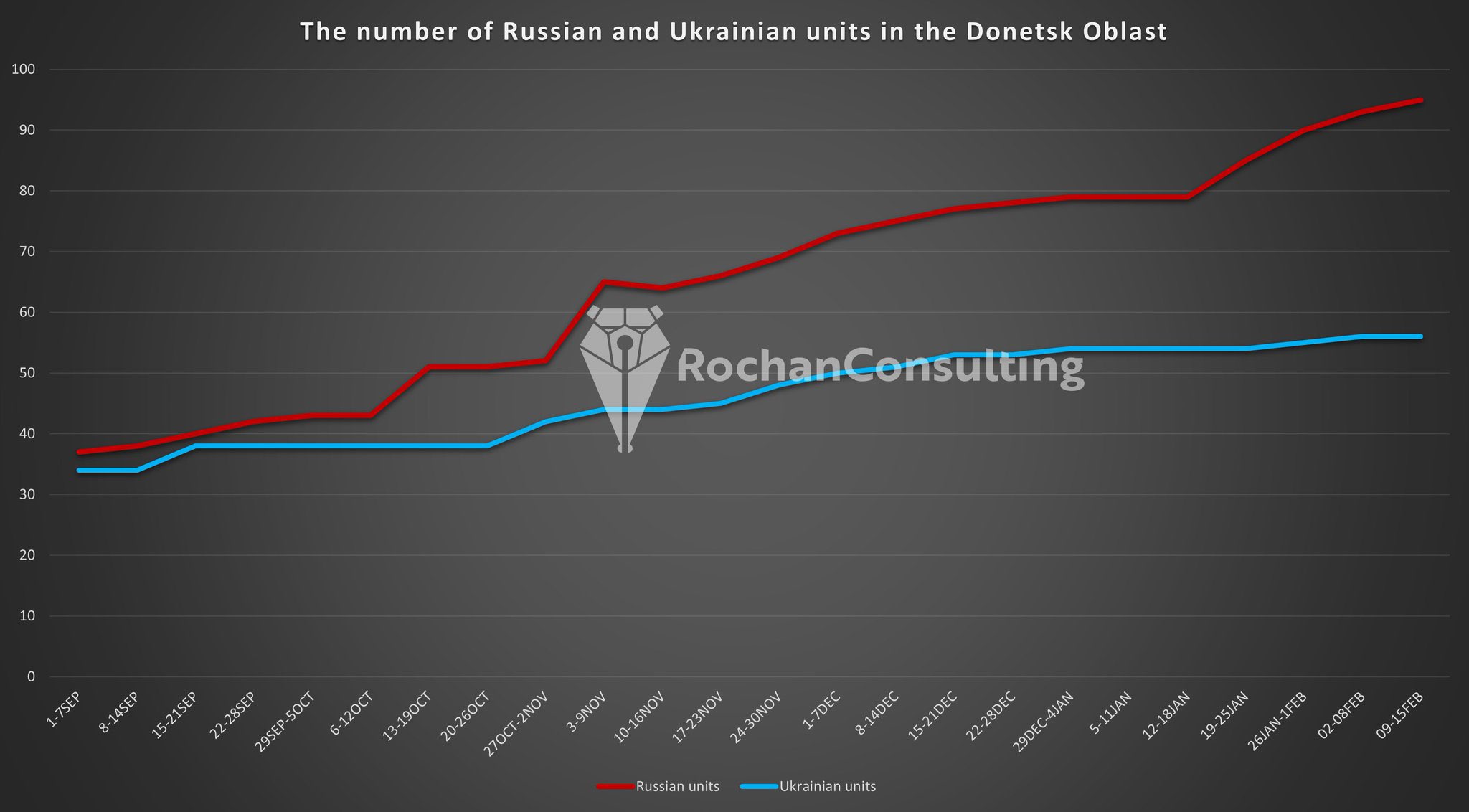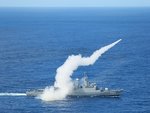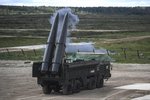A Ucrânia anda perdendo bastante Art AP de origem ocidental. Provavelmente o fornecimento de munições de armas do calibre soviético é demasiado baixo para sustentar as operações da linha da frente. O atrito teria matado grande parte do estoque soviético, especialmente as peças rebocadas. Suspeito que isso seja um problema tão grande quanto a disponibilidade de munição, mas é melhor chorar por causa da pouca munição do que pela baixa contagem de canos, já que a pouca munição faz os ucranianos parecerem heróicos, enquanto chorar por perder a maior parte de seus ataques de artilharia está muito próximo da realidade do que a Ucrânia está perdendo. A Ucrânia que já não é capaz de montar ofensivas eficazes, também ajuda a libertar os drones russos das operações defensivas para caçarem alvos mais profundos na retaguarda ucraniana.gabriel219 escreveu: ↑Qua Fev 28, 2024 8:09 pm No campo da artilharia, já vimos que tudo de tubo que tinha em estoque, em boas condições, foi pra AFU, agora vai ser praticamente coisas novas e a AFU anda perdendo mais rápido do que anda recebendo, então é estimado que a AFU fique com poucos carros de combate e peças de artilharia até o verão, ao ponto de ter que escolher e utilizar FPVs como artilharia. Na contramão, vi uma matéria que estima que os Russos entregam novas peças de artilharia e carros de combate num ritmo superior às perdas, além de infantaria sendo entregue treinada, onde a AFU não possui esse luxo.
Bem lembrado. Com a frente do jeito que está, não vimos tanto movimento desde 2022. Esta fase da guerra parece a fase inicial da guerra após a isca e a mudança com o acordo de paz, mas antes que a Ucrânia conseguisse terminar a mobilização. A diferença agora é que não há forma de a Ucrânia se mobilizar para resolver os seus problemas.gabriel219 escreveu: ↑Qua Fev 28, 2024 8:09 pm Não esqueçamos, claro, do objetivo Russo também reside em Kramatorsk e Slavyansk.
Quando os exércitos entram em colapso, isso não acontece de repente. É um processo lento que culmina na capacidade do exército de oferecer uma resistência ineficaz. A Ucrânia parece estar em processo de colapso neste momento, mas ainda é capaz de oferecer alguma resistência, o que resulta em baixas russas e significa que a Rússia não pode simplesmente fazer o que quiser e quando quiser. Penso que isto irá resultar numa situação não muito diferente de Avdiivka/Bakhmut/Soledar, onde os ucranianos não podem recuar e eventualmente ficar encurralados nas cidades. Já vimos essa dança antes, então não vou discutir muito sobre isso.
O próximo lugar onde algo assim vai acontecer provavelmente é Kramatorsk/Slavyansk.
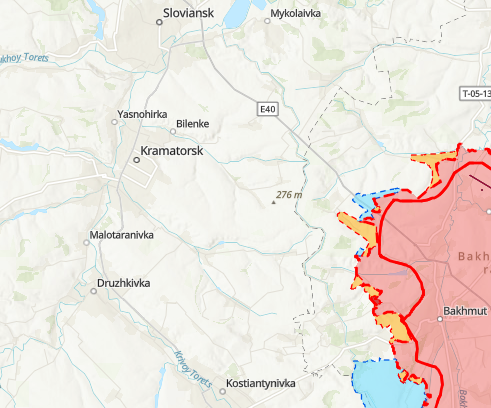
Esta guerra está realmente a começar a trazer comparações com 2014. De qualquer forma, esta é uma das últimas grandes e fortes linhas defensivas que restam no Donbass. É a última linha, mas as outras são mais fracas e mais fáceis de seguir. Esta será uma luta difícil que provavelmente levará pelo menos um mês ou mais. Ainda haverá movimento no sul e pode até ser rápido e impressionante, mas penso que isto acabará por se transformar no espectáculo principal. Mas assim que isso for feito e algumas das outras linhas defensivas no sul forem tomadas, a Ucrânia estará muito mais aberta ao ataque. Se os relatórios sobre a situação a oeste de Avdiivka forem verdadeiros, a Ucrânia está a ter dificuldade em fazer com que a infantaria construa trincheiras básicas porque continua a ser assediada por drones e além de haver uma falta de coordenação entre os militares e os civis necessária para construí-las, a questão parece ser de natureza política. Tomar uma parte de uma linha invalida o resto da linha, a menos que haja outra linha que a divida ao meio e que impeça os russos de se moverem horizontalmente. Essas linhas definitivamente fazem as coisas demorarem mais.
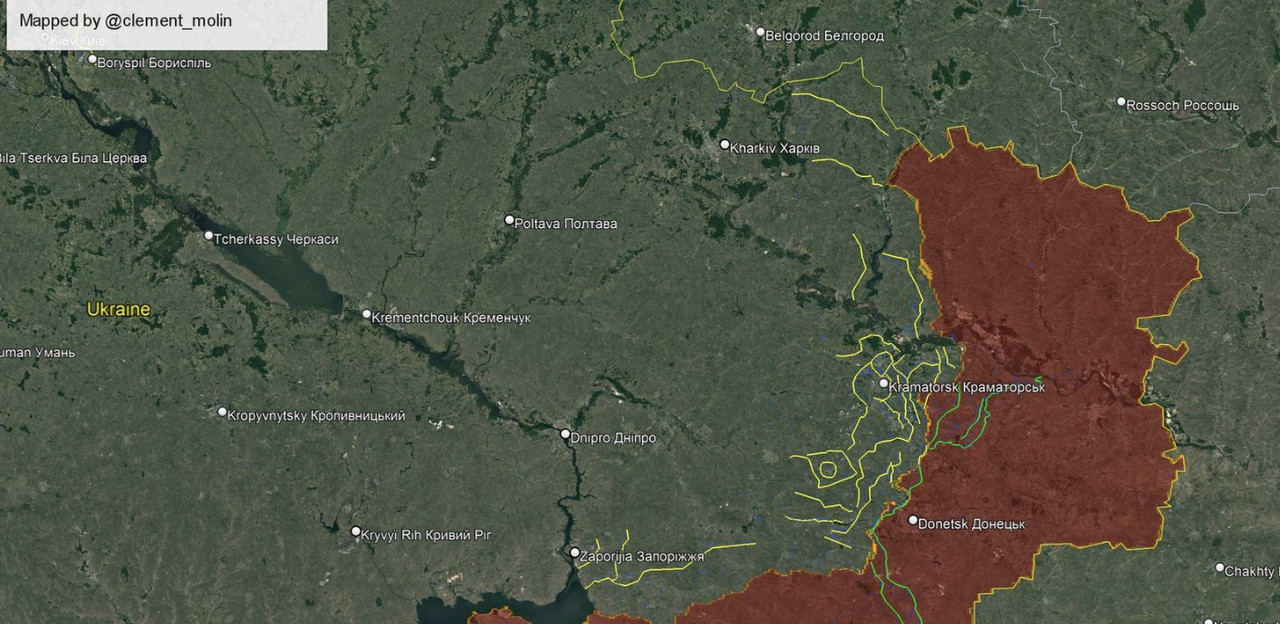
O que traz à tona algo que acho que pode acontecer à medida que esta guerra se desenvolve. Os ucranianos sem fortificações ficarão extremamente vulneráveis em campo aberto. A coisa óbvia a fazer e o que os ucranianos fizeram no passado é recuar para as cidades e usá-las como fortificações. Isto acabará por deixar a Rússia com uma decisão a tomar quando começar a chegar a lugares como Dnipro, Poltava e Kharkiv. A Rússia gasta muito tempo e recursos tomando essas cidades ou as contorna? Me inclino para que a Rússia acabe contornando essas cidades e deixando uma pequena quantidade de tropas cercando a cidade e destruindo lentamente os defensores ucranianos ao longo do tempo, em vez de parar para tomar a cidade e depois continuar. Penso que a Rússia fará isto porque quer maximizar a pressão que exerce sobre a Ucrânia. Quanto mais devagar eles se movem, mais tempo a Ucrânia tem para treinar tropas e tentar construir novas defesas. O que me leva à questão de saber se a guerra de manobra ainda é possível? Minha resposta a isso é sim, mas provavelmente não. Manobrar em uma linha estreita através do território inimigo é uma má ideia. O problema é simplesmente que quanto mais você manobra uma linha profunda, mas estreita contra o inimigo, mais e mais você se abre ao fogo inimigo. A minimização do perímetro entra em jogo aqui. Se isso for verdade, por que a Rússia teve tanta dificuldade em implementá-lo? A razão pela qual a Rússia tem tido tantos problemas no Donbas é porque é incrivelmente urbano. Foi isto que permitiu à Ucrânia construir fortificações. Veja o Donbas e quantas cidades ele possui. Quando a Rússia sair do Donbas será muito mais fácil dirigir para norte e capturar tudo. Quase não haverá cidades no caminho. Também ajudará o fato de a Ucrânia estar degradada até ao inferno quando a Rússia chegar nessas áreas menos densas populacionalmente.
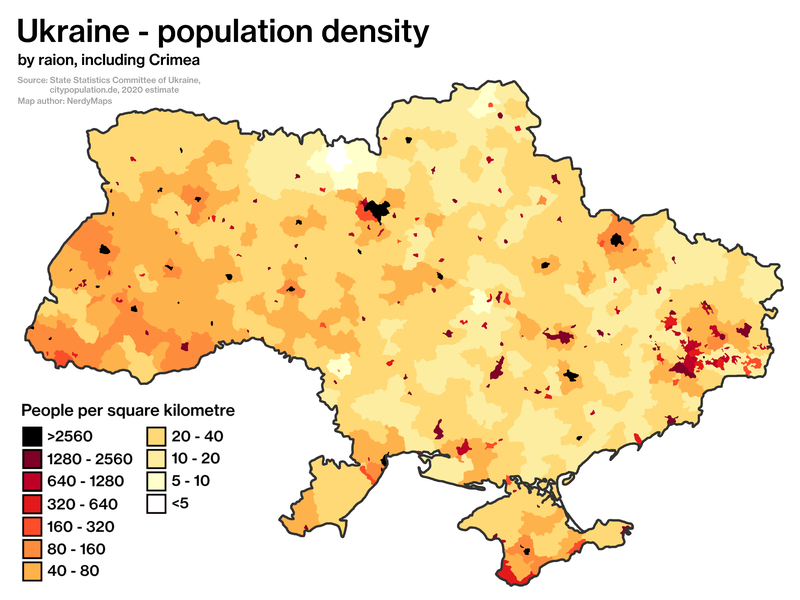
As condições da Ucrânia para uma contraofensiva no ano passado eram credíveis, não tinha motivo para permanecer na guerra posicional de atrito, com grande poder ofensivo acumulado, não fazia sentido permanecer estático, mas a maneira como eles estragaram a contraofensiva foi o que derrubou a capacidade de combate da AFU no final de 2023 e início desse ano, os russos prevendo esse fracasso ucraniano chamaram a contraofensiva ucraniana de Operação Frühlingserwachen - a última contraofensiva alemã que foi rapidamente seguida pelo colapso do regime nazista na SGM, o artigo do Gen. Alexander Romanchuk na Escola de Comando russo quis destacar o mesmo destino dos “neonazistas” em Kiev.gabriel219 escreveu: ↑Qua Fev 28, 2024 8:09 pm Cada dia que se passa é demonstrado que a contraofensiva da AFU em 2023 foi o maior erro de cálculo da guerra, pois se a AFU optasse por preservar os equipamentos e construir defesas, ao invés de recuperar terreno, teria até uma vantagem frente aos Russos, porém quem optou por isso, usando a Wagner para realizar ofensiva, enquanto fazia uma transformação total nas suas Forças Armadas, reequipando e treinando novas tropas, foram os Russos e agora vemos que essa decisão pode ter sido decisiva pra guerra.
https://wavellroom.com/2023/05/22/the-r ... -doctrine/
https://vpk.name/en/795352_the-tactics- ... erves.html
https://wavellroom.com/2023/06/14/tacti ... -7-8-june/
Destacado aqui também: viewtopic.php?p=5648446#p5648446
Já, outros denominam dessa forma:
https://tass.com/defense/1750919 Collapse of Operation Citadel 2.0
The goals of the Ukrainian army’s offensive in the summer of 2023 and the size of combat groups formed to carry it out are to a certain extent comparable with what the German military fielded for its Operation Citadel in 1943. This gives us the grounds for calling Kiev’s offensive in the summer of 2023 Operation Citadel 2.0.
Considering its military-political consequences, the collapse of Citadel 2.0 meant not simply the Ukrainian army’s military-strategic defeat but also the collapse of the consolidated West’s hybrid blitzkrieg.
...
For this operation, the enemy created a formidable grouping of forces, which numbered almost 160,000 personnel (110 battalions), 2,100 tanks and other armored vehicles, 960 field artillery guns and 114 aircraft. Such an amount of artillery helped create a fire density of up to 10 guns per km of the frontline in the directions of the main attack. The Ukrainian military set up substantial stocks of ammunition: over 500,000 155mm shells, more than 150,000 shells of other calibers, 560,000 mortar rounds and 50 Storm Shadow long-range precision cruise missiles. This density of the Ukrainian army’s artillery and ammunition stocks enabled it to carry out as many as 190 firing missions daily.
...
The Ukrainian army’s strike force should be compared with combat groups and capabilities that took part in battles recorded in world history to have an idea about its scope. In this regard, it will be interesting to compare it with the battlegroup that Nazi Germany’s Wehrmacht deployed against the Soviet Army in its Operation Citadel in the Battle of Kursk in the summer of 1943. According to German data (Mueller-Hillebrand, German Army. 1933-1945), two strike forces had a total strength of about 780,000 personnel, 2,540 tanks and self-propelled artillery systems (with extra 218 weapons under repairs), about 10,000 field guns and over 2,000 aircraft at that time.
...
Russian troops built two, and in the most important directions, three defensive lines, with reserves attached to vast expanses in front of the first basic positions in the tactical zone of defense with sentries and minefields. Along the entire frontline, Russian forces equipped over 3,000 platoon strongholds, 45,000 dugouts and more than 150,000 shelters for equipment. They built about 2,000 km of anti-tank ditches and laid over 7,000 km of minefields, planting about 5 million mines. The minefields were twice as deep as required by the regulations, reaching 600 meters in depth. All this huge amount of work was carried out by military builders, engineer and railway troops. Civilian organizations also assisted Russian troops. The state company Avtodor and specialists from Moscow, the Moscow Region, Crimea and other Russian regions rendered considerable assistance in equipping defense areas.
Such a powerful system of engineered structures and fortifications helped create sustainable defense, even though the enemy enjoyed superiority over the defending troops by 1.5 times in terms of manpower, 1.2 times in terms of armor and 1.3 times in terms of artillery in major attack directions.
Aside from the troops in defense, the Russian military command set up considerable reserves intended to bolster the defending forces and launch counterattacks. The reserves comprised two full-fledged armies that had a total numerical strength of about 60,000 personnel and over 8,600 combat and special vehicles, including 980 tanks and other armored vehicles, and also more than 2,200 various motor vehicles. Considerable forces of army, operational-tactical, long-range and even strategic aviation provided support for the Russian troops.
...
The Russian Army also set up a sufficient stock of ammunition for high-intensity battles for a long period, including UAVs of various designation whose total number was as large as 10,000, judging by the intensity of their use reported from open sources.
...
The Ukrainian army began its offensive on June 4, 2023 by delivering a massive artillery strike and subsequently committing a considerable number of mechanized troops with heavy armor to action, in particular, units operating powerful Western-made tanks delivered to Ukraine, particularly, Leopard 2A6 tanks, and also US-made Bradley infantry fighting vehicles. In this regard, the Ukrainian military repeated the Wehrmacht’s actions of July 5, 1943.
...
The enemy’s armored units advancing in the main direction initially suffered losses from strikes by Russian crews of anti-tank missile systems deployed at forward positions and helicopters. In this defense, Russian Kornet anti-tank missile systems demonstrated their capability effectively to strike Western Leopard 2A6 newest and well-armored tanks. After that, the Ukrainian military encountered minefields and had to move in a long column behind minesweepers. After the enemy’s forward armored vehicles were struck, the columns had to stop, search for a detour and try to retreat. Russian troops delivered artillery strikes on the enemy’s armor concentrated on limited terrain outside the cover of the Ukrainian army’s already thinned-out air defenses while army aircraft carried out sorties to destroy it by anti-tank missiles, and attack aircraft and unmanned aerial vehicles also operated effectively. As a result, the enemy sustained heavy casualties. Nonetheless, it continued its attempts to break through the Russian defenses by armored fists for two more weeks.
...
The Ukrainian army’s losses over the period of its offensive turned out to be huge and considerably exceeded the initial strength of the attack force that was replenished during battles by ill-trained personnel and far from the best combat hardware from reserves of the rear. The Ukrainian grouping’s losses amounted to 166,000 personnel or 25% above its initial strength, 789 tanks and 2,400 other armored vehicles or more than 50% above the initial amount, 132 aircraft or 15% more than what the Ukrainian military had by the time of its offensive.
...
We should note that in repelling the Ukrainian army’s offensive in the summer of 2023, the Russian Army actively employed various types of UAVs, considerably outnumbering the enemy’s unmanned aerial vehicles. Russian troops used 1,200 Lancet loitering munitions and 4,400 FPV drones alone in the battles.
...
Ukraine and generally even the collective West suffered grave military and political consequences of the failure of Operation Citadel 2.0. The failure of the Ukrainian army’s offensive meant not only a strategic defeat of Kiev’s forces but also the collapse of the united West’s hybrid blitzkrieg when huge economic losses related to unprecedented sanctions and enormous deliveries of various armaments yielded no results. A trend for the West to lose its status as the ruler of the world’s destinies intensified. In turn, this triggered the process of reducing the Western civilization’s spheres of influence, considering that the BRICS association expanded to 11 countries and another 27 states applied for the organization’s membership.
...
However, despite such a heavy defeat suffered by the Ukrainian military, the enemy is still strong enough. This is because it is the US-led united West rather than Ukraine with its armed forces that is Russia’s main enemy and Ukraine is just one of the fronts of the West’s hybrid war against Russia. The failure of the first hybrid blitzkrieg does not mean a cessation of the war against Russia. On the contrary, this implies expanding the aggression and beefing up the entire set of actions constituting hybrid warfare, including the opening of new fronts of the armed confrontation.
That is why, similar to how the Soviet Army had a long way to Berlin after winning the Battle of Kursk, today Russia still has to embrace a long struggle after Kiev’s botched Operation Citadel 2.0 until the Final Victory that it will certainly win. But it has already achieved the first and truly Big Victory.



